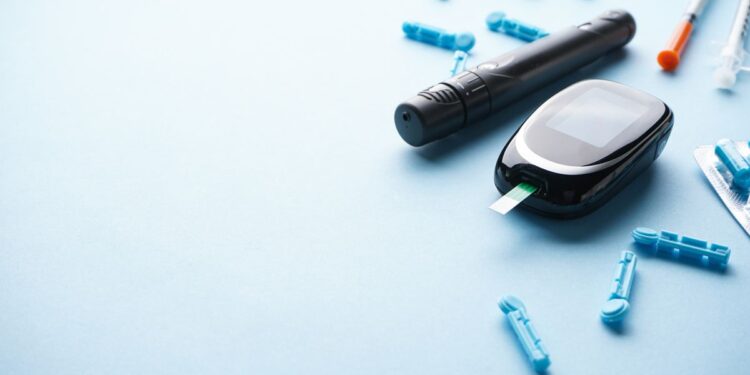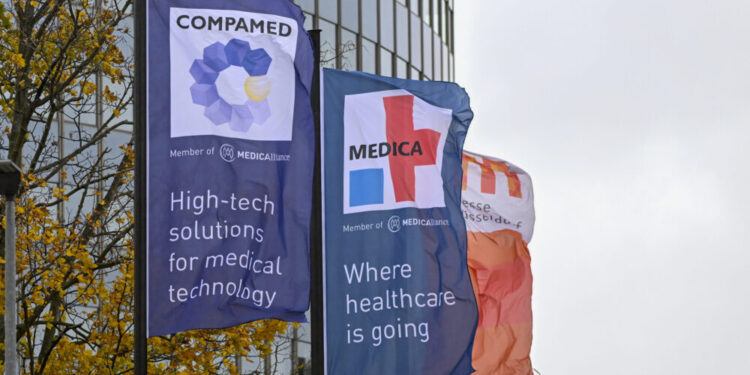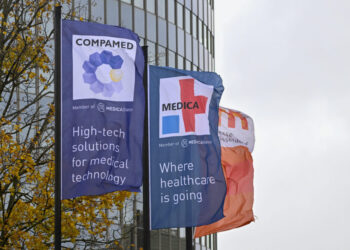From new product launches to regulatory changes that could expand CGM coverage, company executives and analysts share their predictions.
Diabetes technology companies including Dexcom and Medtronic are preparing for a year of new product launches and expected regulatory changes that could expand their customer base.
Dexcom is gearing up for a planned launch of its new G7 continuous glucose monitor in the U.S., while Insulet begins to roll out its new Omnipod 5 insulin pump in Europe. Meanwhile, Medtronic awaits a resolution to a Food and Drug Administration warning letter, which it received for a delayed recall after problems were identified with its MiniMed 600 series pumps, before it can seek clearance for new diabetes products.
Companies also are preparing to expand their technologies to a wider group of patients, as well as developing new software features and physical form factors for their products.
MedTech Dive spoke with six medical device executives and two analysts about their plans and predictions for 2023. Here are their responses.
These interviews have been edited for length and clarity.
What new product launches do you have planned for 2023?

Kevin Sayer, CEO of Dexcom: We are building inventory. When we launched our G6 product back in 2018, our user base was at most a third the size of what we have now. We didn’t launch it overseas [or] to Medicare patients at the start. Because it was such a great product, it grew much faster than we anticipated.
With G7, we’re learning from that. So we’re building inventory, we’re getting our ducks in a row so we can get it out the door. And we’ll continue to roll it out in [Europe]. We haven’t pushed the ads yet because the start was in the fourth quarter and over the holidays in several of these markets, things slow down significantly at the doctor’s office. You still need a prescription in many places too.
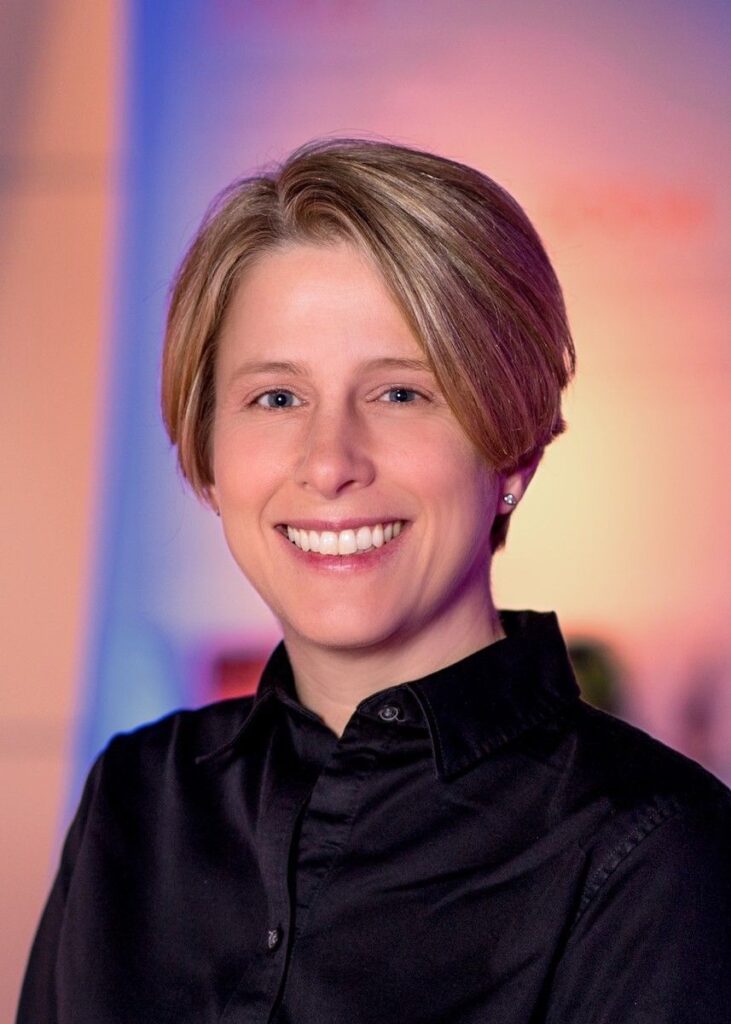
Elizabeth Gasser, Tandem Diabetes Care’s chief strategy officer: This year, we’re looking at the introduction of Mobi, which is a smaller form factor, no screen but still a tube pump. … We announced that we made our FDA submission. We’re in back-and-forth mode. This remains a 2023 target for us to bring this product to market to our customers. What’s going into that is a whole lot of preparation and planning for an exciting new addition to the portfolio.
Tandem Chief Strategy Officer Elizabeth Gasser
Permission granted by Tandem Diabetes Care
Ali Dianaty, senior vice president for product innovation and operations, Medtronic Diabetes: We remain in active review with the FDA on our submission of the MiniMed 780G system with the Guardian 4 sensor. Outside the U.S., we continue to receive positive customer feedback on the performance of the MiniMed 780G, which is now available in over 60 countries, and we look forward to making it available in new geographies next year. We also look forward to continuing to drive access of our Medtronic Extended Infusion set, which is the first and only set that doubles wear time up to 7 days.
In our CGM pipeline, we submitted our next-generation sensor, Simplera, for CE Mark. Simplera is disposable, it’s easier to apply and it’s half the size of Guardian 4 sensor. The Simplera file is ready to submit to the FDA, and we’re waiting to submit it as we’re prioritizing the 780G/Guardian 4 review.
We’ve been focused on the long-term lifting of the warning letter as it is critically important not just about 780G but our future pipeline. We’ve got a lot of technology that’s right behind 780G.
We’ve completed 100% of our commitments to the FDA and have informed FDA that we are ready to welcome the agency for re-inspection.
Ali Dianaty, Medtronic Diabetes
Permission granted by Medtronic
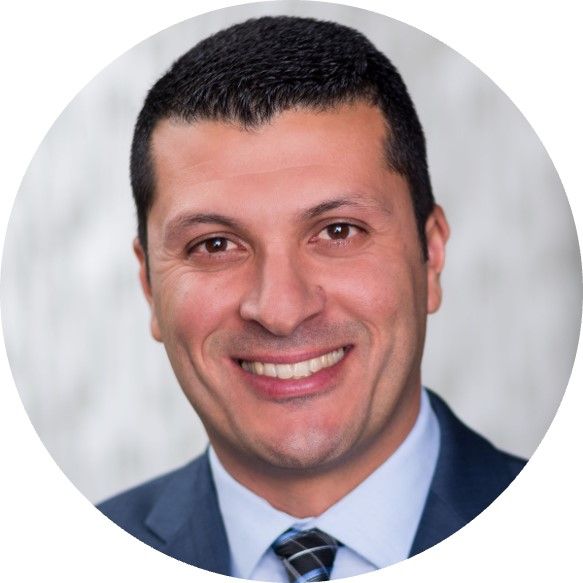
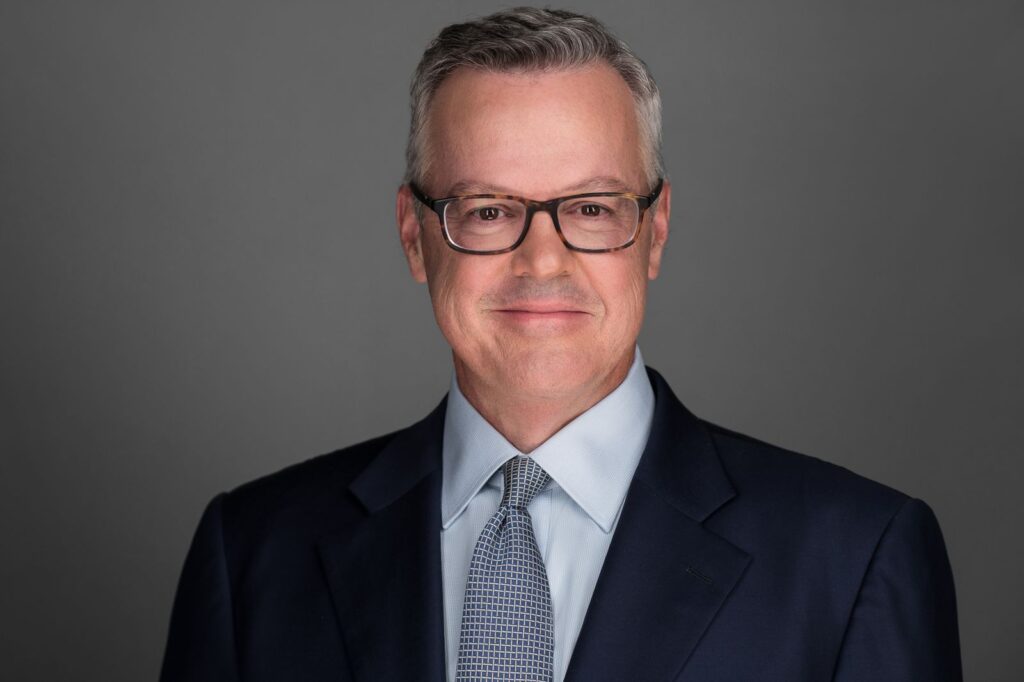
Jim Hollingshead, CEO of Insulet: Growing adoption in the U.S. and bringing Omnipod 5 to our European customers will be our focus this year. We intend to launch Omnipod 5 in our first European market in mid-2023 with a broader rollout in 2024. We achieved CE mark in September 2022, and now we are ensuring that our data privacy, security and our cloud infrastructure complies with CE rules as well as country-by-country regulations. We are excited to launch in our first European market in 2023. We will also continue to drive adoption of Omnipod 5 in the U.S. and we intend to launch a pivotal trial for a Type 2 indication for Omnipod 5 this year.
Insulet CEO Jim Hollingshead
Permission granted by Insulet
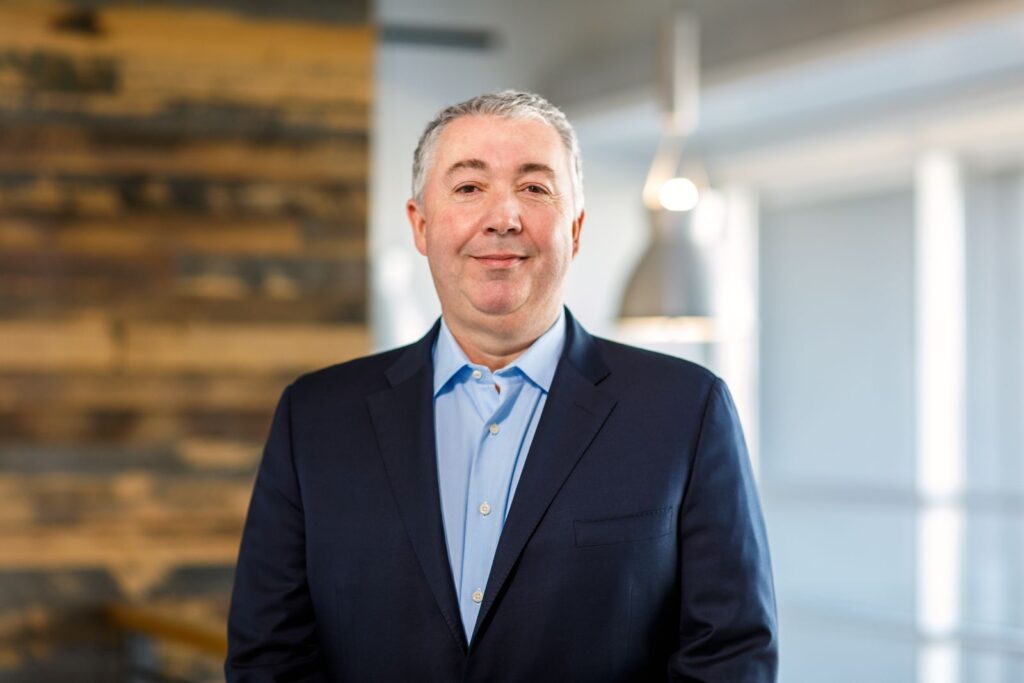
Jared Watkin, senior vice president of Abbott’s diabetes care business:
The FreeStyle Libre 3 system, with the world’s smallest and thinnest sensor, is now available in 11 countries across Europe and the U.S.
In the U.S., in particular, we’re seeing a lot of excitement, and we’ll likely see that continue throughout 2023. Outside the U.S., we just announced that the FreeStyle Libre 3 sensor now works with the myLife Loop automated delivery system in Germany. We’ll be expanding that into more countries in Europe in 2023.

Matt Rainville, chief commercial officer of Bigfoot Biomedical:
We are continuing to develop technologies, products and solutions which help people with diabetes who are currently underserved by current diabetes medical technology. In the near term, that means expanding the insulin pen options where Bigfoot Unity is compatible, but longer term, we are working on ways to continue to put the burden of insulin dosing in the background for people who are on [multiple daily injections].
Matt Rainville, chief commercial officer of Bigfoot Biomedical
Permission granted by Bigfoot Biomedical
Do you expect CMS’ proposal on CGM coverage to affect companies next year?
Marie Thibault, analyst at BTIG: CMS put out a proposed Local Coverage Determination last year, and there’s some expectation by both of the two large CGM players, Abbott and Dexcom, that Medicare coverage could go into effect in the second half of this year. So we’re looking forward to that, and then to expand CGM access to something like 1.5 million patients in the U.S. who are under Medicare. Of course, the other big piece of that is if we’ll see some commercial insurers follow. We think many of them will gradually, and that would become a total of approximately 3 million patients in the U.S. [who] would fit under that broader criteria. That would be a whole lot more CGM users, and certainly would be making it a pretty mainstream technology.
Marie Thibault, analyst at BTIG
Permission granted by BTIG


Margaret Kaczor, analyst at William Blair: Given the pricing that seems to be implied by CMS, that should leave a lot of room for sales and marketing on both Abbott’s as well as Dexcom’s perspective to drive growth, adoption and awareness.
A lot of these patients ultimately are being seen by primary care physicians, so you need a broader sales and marketing force to try to educate those clinicians and gather approval.
It’s rare to see this, but the clinical societies, [American Diabetes Association] and other organizations said all insulin users should be on CGMs. When you have alignment between the payers as well as the physicians, that should really open coverage.
Margaret Kaczor, analyst at William Blair
Permission granted by William Blair
Kevin Sayer, Dexcom: We’ve planned for this for quite some time. We ran the study that provided the clinical evidence that was a primary factor in CMS offering this coverage decision by putting CGMs on a very large group of basal patients in a very regulated real-time clinical trial. And we saw the same outcomes with basal insulin patients that we saw with intensive insulin users: significant reduction in A1c, hypoglycemia risk gone.
And we know the majority of these individuals see primary care doctors; they don’t go to endocrinologists. We doubled the size of our sales force in 2021 in an effort to get more coverage on the primary care side, and to get more relationships there.
Jared Watkin, Abbott: Abbott supports the proposal by the Centers for Medicare and Medicaid Services to expand coverage for continuous glucose monitors to the more than 3.3 million Medicare beneficiaries who use insulin and recognizes that it is an important step to removing barriers to care. By eliminating multiple daily injections as a criterion, more people will have access to the FreeStyle Libre portfolio, critical technology that helps them manage their care more stably, and in turn the potential to reduce complications from this chronic condition.
Ali Dianaty, Medtronic Diabetes: It is great to see CMS introducing policies that put people with diabetes first and empowers them to make personal decisions around how they wish to manage their diabetes. Although Medtronic’s Guardian Connect CGM is broadly indicated for diabetes, it will continue to not be covered under the new policy because the system does not include a receiver, which is a requirement to meet the CMS definition of durable medical equipment.
More broadly, do you expect more patients with Type 2 diabetes to access CGMs, insulin pumps and other technologies as part of their care?
Jared Watkin, Abbott: In many countries, FreeStyle Libre technology is only reimbursed for people with Type 1 diabetes or certain people with Type 2 diabetes who meet specific criteria, such as having to do multiple daily injections or poorly controlled HbA1c levels.
We’d like to see this access expanded to more people with Type 2 diabetes. We have compelling clinical data showing the use of FreeStyle Libre 2 significantly reduces acute diabetes events among people living with Type 2 diabetes using basal-only (once daily) insulin therapy. Our hope is that this type of evidence will help make innovative CGM technology accessible to all people living with diabetes, not just those on intensive insulin therapy.
Ali Dianaty, Medtronic Diabetes: One in 10 adults in the U.S. are living with diabetes and current rates are projected to double by 2040, including a sizeable increase in those living with T2D, especially in the U.S. This provides an opportunity for Medtronic to go beyond our service to those living with T1D, which has historically been our core market.
In the near term, we are ensuring access to those living with T2D through easy-to-use products, like InPen, and the full-service support we offer our pump patients. In the long term, our focus is on optimizing our presence across channels and improving the simplicity of our therapy through our future pipeline.
Jim Hollingshead, Insulet: We are seeing increased interest in pump therapy from people with insulin-requiring Type 2 diabetes. Our Omnipod DASH product, which has the same form factor – a tubeless, wearable, disposable Pod – has been extremely popular with people with Type 2 diabetes. We are following this trend closely and have submitted a 510(k) to the FDA for a basal-only Pod for the Type 2 market. We plan to begin U.S. commercialization in 2024.
Matt Rainville, Bigfoot Biomedical: We sure hope so and believe that all people with diabetes should have the ability to access cutting edge technology that will help them better manage their diabetes and live healthier lives where diabetes doesn’t need to be their focus. As you know, much of this technology has been created to serve engaged people with Type 1 diabetes. This is great, but what about the other segments of the T1 and T2 population who don’t fit this description? They deserve options as well.
Can you share any plans or predictions for M&A?
Kevin Sayer, Dexcom: We’ve made some strategic acquisitions over the years that we’re very proud of. We bought a company called TypeZero in Virginia that is the basis of the Control-IQ algorithm for Tandem, and we’re working on a lot of science and analytics with that group that we bought. We think it will be very important for us going forward in the future. So we look at that type of technology, some skills or some software that we don’t have.
We haven’t found big things that can move the needle yet, and we’ve worked so hard organically growing our business that that hasn’t been a focal point of our strategy. We’re big enough that we probably should start thinking more about that. But for today, we’re happy where we are.
Marie Thibault, BTIG: I’m not going to put any companies in play, but I think general trends for M&A are software apps that allow more data insights to make it easier for patients to manage their condition. We might see interest in technologies that reach the really broad diabetes population. So we’re not talking just for Type 1 patients, but possibly non-insulin using [Type 2] patients or even prediabetes. And so these could be things like, easier ways to take your blood glucose measurements, easier ways to administer your insulin. All of these sorts of additional features or convenience benefits, those kinds of technologies will be interesting to watch.
Margaret Kaczor, William Blair: You’ve got the interest right now on the patch-pump side and there are a couple of smaller patch competitors out there that are working on products. Tandem acquired something there [in AMF Medical]. Does Medtronic want to do the same? Would Embecta try to do that? Would Beta Bionics try to do that? I’m not sure, but I think that a lot of the interest is there.
I think the other angle of potential activity within diabetes is going to be on the software side and the training side.
What technologies are you following right now?
Kevin Sayer, Dexcom: We watch all the software experience companies very closely and we look and see what we can learn from them. We certainly also monitor everything in the glucose monitoring space. The last thing you want to do is wake up and be asleep behind the wheel while some disruptive technology would come in and cause us problems, so we monitor all that. We’re still very bullish on ourselves and the scale that we built in our business; the ability to manufacture hundreds of millions of these things is going to be a tremendous asset for us.
Elizabeth Gasser, Tandem: I do remain very interested on the CGM side in the progress that can be made with additional analyte sensing. So if you’ve been adding ketones and other analytes into your CGM, can you do more with your algorithms in terms of the quality of the automation we can provide?
There’s a long-standing conversation about less invasive and non-invasive CGMs, whether they’re doing that through micro needles or radiofrequency or optical sensing. A lot of that feels a fair way out. It comes around every year. I know there are companies making progress.
One that you might not be expecting: battery technology. It’s consistent with my general anxiety around how we as an industry are better stewards of the environment. Where should we be looking in terms of novel battery technologies over time?
Jim Hollingshead, Insulet: We’re particularly excited about data, AI and machine learning. We have more than 20,000 person-years on Omnipod 5, thanks to our continuous cloud connection. We will use this data to produce actionable insights for users and providers, which will help deliver better care and better outcomes for people with diabetes.
We continue to advance our robust innovation pipeline with a focus on future [automated insulin delivery] offerings as well as building our digital and data capabilities. Our iOS integration work is ongoing as is our development work to integrate Omnipod 5 with Dexcom’s G7 and Abbott’s CGMs. We remain committed to building on our product offering and also providing CGM of choice to our customers.
Jared Watkin, Abbott: We’re developing a first-of-its-kind sensor that will enable people with diabetes to continuously monitor both glucose and ketones in the same sensor. We believe this dual analyte sensor is the next big advancement in diabetes tech. It will redefine diabetes care, especially for those who are at risk of developing diabetic ketoacidosis, a life-threatening condition when ketones build up in their blood.
Marie Thibault, BTIG: We’re also looking at non-invasive glucose monitoring hopefully becoming more accurate. We’re looking at wearable technologies for consumers, whether it’s a watch or ring or that sort of thing, moving toward being able to monitor glucose for consumers. And then other trends we like to see are accessibility and user friendliness, and less burden of managing the disease, whether that’s using apps or software or smart insulin pens — things outside of the CGMs and the insulin pumps that we typically don’t talk a lot about play a big part for patients in making the disease more manageable.
Elise Reuter Reporter



